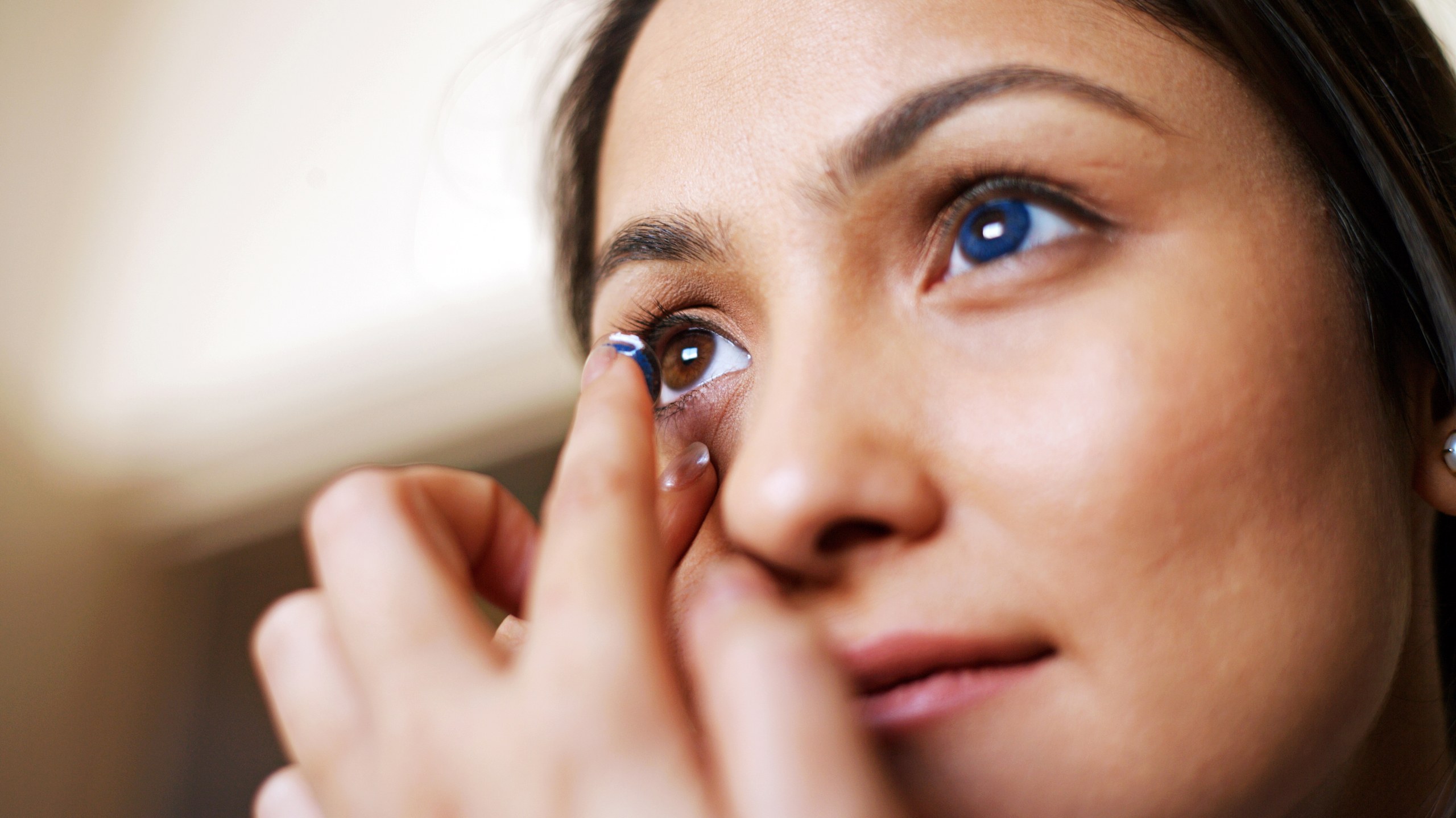
This Halloween teenagers and young adults can be found chasing contacts in colors like white zombie, red vampire and sexy sapphire. Sales of contact lenses are up 20 percent, and manufacturers are targeting the youth market with wild colors and patterns like zebra, ice fire, knockouts, and red hots.
Tinted contact lenses are contact lenses that have had a dye incorporated into the lens material. This dye gives the lens a particular hue or tint, depending on the color of the dye used. Some tinted contact lenses can be used to subtly alter the natural color of the eye, while others can be used to completely “change” the color of the eye.
There are three types of tinted contact lenses:
- Visibility tinted contact lens: lightly tinted (i.e., they contain only a small-amount of dye). No change in color of your eyes.
- Color enhancement contact lenses: intensify the natural eye color, and
- Opaque contact lenses: change” the natural color of the eye.
| In the words of Peter Russo, OD, director of the Contact Lens Program at Loyola University Medical Center. “Contact lenses should never be worn without a prescription from a licensed optometrist or ophthalmologist.” |
Risks Involved
Non-prescription contacts can cause serious eye infections, injuries and blindness.
- If a lens is too tight, it can squeeze and cause scratches. If it’s too loose, it’ll roll around and usually falls out.
- Cause of bacteria eye Infection. Here, it’s important to note that even with proper contact lens care, some risk of eye infections remains. This is particularly true of fungal eye infections. Both, bacteria as well as fungi, produce substances that form a slimy matrix, which helps the microbes stick to each other and to the lens surface and makes them more resistant to the disinfecting action of contact lens solutions.
- When purchased without a prescription, buyers are unable to receive proper instruction on how to care for and wear contacts. Users might, for example, use the wrong solution, share with a friend, wear improperly, fail to disinfect or use tap water rather than contact lens solution
How To Prevent Fungal Eye Infections?
Tips recommended by eye doctors to reduce your risk of contact lens-related eye infections:
- Wash and dry your hands thoroughly before handling your contact lenses.
- Rinse your contact lens storage case with fresh contact lens solution and let it air dry between uses.
- Replace your contact lens storage case every three months, or as recommended by your eye doctor.
- Never “top off” old contact lens solution with new solution. Throw away the old solution completely, clean the contact lens case and use fresh solution.
- Wear contact lenses only according to schedules outlined by your eye doctor and contact lens manufacturer.
The American Optometric Association and the FDA recommend that you rub your contact lenses when rinsing them with disinfecting solution, even when using a “no-rub” product. A study of popular multipurpose disinfection solutions revealed that, regardless of lens type, manually rubbing the lenses under a steady stream of fresh solution for several seconds, then storage in fresh solution, killed the most bacteria, fungi and Acanthamoeba (naturally occurring amoeba) microorganisms. A report on the study appeared in the August issue of Optometry and Vision Science.
